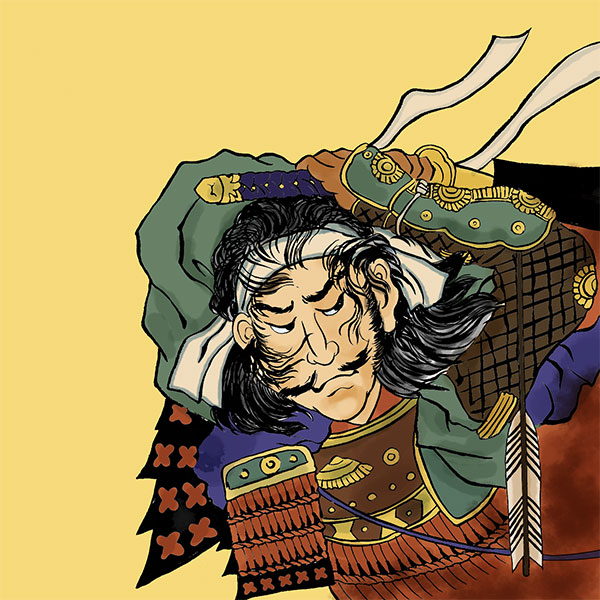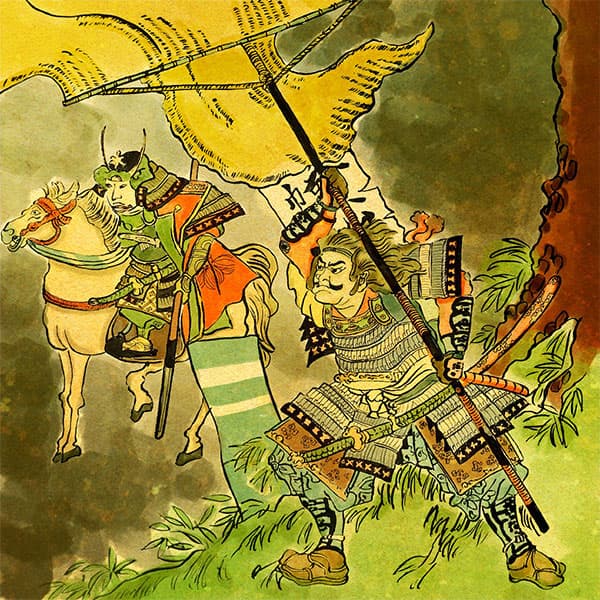Tatsuoki Saito (2/2)The end of the rebellion caused by the viper

Tatsuoki Saito
- Article category
- biography
- name
- Tatsuoki Saito (1548-1573)
- place of birth
- Gifu Prefecture
- Related castles

Gifu Castle
- related incident
The Oda family invaded Nagashima in northern Ise and subjugated the local feudal lords. In this year, the Oda family added Kitaise to their land following Mino Province. Capturing this northern Ise area became the stepping stone to conquering Okochi Castle in 1569 and seizing all of Ise Province.
In any case, despite fleeing to Ise Province, Tatsuoki Saito was pursued by the Oda family. Since Tatsuoki had no means to fight back, he also left Ise Province behind.
change of battle
Now, Oda Nobunaga drove out Saito Tatsuoki and secured Mino Province and Northern Ise. Nobunaga's next goal was to invade the Kinai region. At that time, the Miyoshi family controlled most of the Kinai area. In 1565, the Miyoshi family attacked and killed Yoshiteru Ashikaga, the 13th general of the Muromachi shogunate (Eiroku Incident). There will be no Shogun in Kyoto. Therefore, Nobunaga supported Yoshiaki Ashikaga, the younger brother of the murdered Yoshiteru Ashikaga, and went to Kyoto. The Oda family, which supported Yoshiaki Ashikaga, gained influence over the feudal lords and kokujinshu in the Kinai region, while the Miyoshi family was gradually driven out of the Kinai region.
Tatsuoki Saito, who had a grudge against the Oda family, relied on the Miyoshi family. On New Year's Day in 1569, the Miyoshi family and Tatsuoki attacked Yoshiaki Ashikaga, who had become the shogun, in order to defuse the situation (Honkokuji Incident, Battle of Rokujo). This attack on Yoshiaki Ashikaga ended in failure, and the Miyoshi family abandoned Kinai and retreated to their home territory of Shikoku.
The Miyoshi family continued to decline with the advent of the Oda family. In the first year of Genki (1570), the Miyoshi family, wanting to make a comeback, teamed up with the Kennyo of Ishiyama Honganji Temple, the Asai family of Kita-Omi, the Asakura family of Echizen, and the Rokkaku family of Minami-Omi to fight against the Oda family (Battle of Noda Castle, Fukushima Castle, Shiga no Shogun, Battle of Ise-Nagashima (or "First Nobunaga Siege Network"). Tatsuoki Saito also joined this anti-Oda clan siege, and joined the Nagashima Ikko Ikki together with his vassal Michitoshi Nagai to fight against the Oda clan.
This battle continued until the end of the first year of Genki, and peace was concluded between the Oda family and anti-Oda forces.
the end
Tatsuoki Saito joined the Ikko Ikki of Ise-Nagashima during the first siege of Nobunaga. After peace was concluded, Tatsuoki fled to the Asakura family in Echizen Province, with whom he was related by marriage, and was protected and became a guest commander.
In August of the following year, Genki 2 (1571), Kennyo of Ishiyama Honganji Temple sent a letter to Saito Tatsuoki (at this time, Tatsuoki was using the name Isshiki Shikibu Daisuke, so it was addressed to Isshiki), realizing his ``intention''. I am sending money and a long sword to pray for this. From here, Saito Tatsuoki seems to have planned to descend south from Echizen Province and enter Mino Province. This is because in August of the following year, Genki 3 (1572), plans were being made for Tatsuoki Saito to enter Mino at a temple connected to Honganji in Mino Province. Through the mediation of Hongan-ji Temple, the Endo clan of East Mino was persuaded to defect, and Tatsuoki Saito from Echizen Province in the north, and Hironari Hineno, a vassal of Tatsuoki Saito, from Ise in the south, planned to invade Mino Province. It had become. This plan was put into action, but it did not go well as the forces of the Asakura family who were supporting Tatsuoki were unable to advance due to snow.
In August 1573, the Oda family invaded the Asai family in Kita-Omi. The Asakura family dispatched an army to support the Asai family, and Tatsuoki Saito also participated in this army. However, on August 14th, the Asakura army was defeated by the Oda family and attacked (the Battle of Tonezaka).
Tatsuoki Saito was killed in action by the Oda family during this pursuit, at the age of 26. One theory says that the person who killed Tatsuoki was Naomasa Ujiie, the eldest son of Naomoto Ujiie, who was once a senior vassal. After his death, his Buddhist name was Zuiun-an Ryuko Koji, or according to the "Jozaiji Records", he was given the name Zuikoin Ryubuchi Soun Nichiju Daikoji.
The tradition of Hashima
Now, Tatsuoki Saito was supposed to have lost his life in the Battle of Tonezaka. By the way, there are several stories about Tatsuoki that he did not die in the Battle of Tonezaka and was still alive afterward. One of them is the story of Hashima.
Saito Tatsuoki fled the Battle of Tonezaka and returned from Hokuriku to Ishiyama Hongan-ji Temple in the Kinai region, where he joined Hongan-ji Temple. Under the influence of Hongan-ji Temple, he attempted to revive the Saito family of the Dosan school. However, it is said that he secretly infiltrated Mino Province and died of illness at a temple in present-day Ashikaka-cho, Hashima City, Gifu Prefecture.
Gankyoji Temple in the same area is said to contain the grave of Saito Tatsuoki, as well as the memorial tablets of his father Yoshitatsu, his son Tatsuoki, and Yoshihito Kobei, who is said to be Tatsuoki's son.
Kyuemon and Kokokuji Temple in Etchu
According to the legend of Kokokuji Temple in Toyama City, after Tatsuoki escaped from Mino Province, he traveled to Fuichi Village, Shinkawa District, Etchu Province in March 1569, taking his heirloom genealogy with him, and took refuge at Kokokuji Temple. Ta. He was thinking of reviving the Saito family of the Mebushi Dosan school, but when he realized that it would not be revived, he changed his name to Kyuemon and returned to farming. Ryuko, who became Kyuemon, cultivated the area while encouraging his family, saying, ``The power of Buddha is the power of sutras.'' In 1580, he settled down and named the area Kyoriki Village. Ta.
In the 16th year of Keicho (1611) during the Edo period, which became the Tokugawa era, Kuemon handed over the headship of the family to his son, became a priest at Kokokuji Temple, and became the chief priest of the temple. At Kokokuji Temple, the samurai armor and nenjibutsu (wooden standing statue of Amida Nyorai) that Ryoko was said to have worn have been handed down in the temple.
Furthermore, there are other legends about Kuemon (Ryuko) who returned to farming in Toyama. One day, Kuemon is shown a certain place by a flying crane. When Kuemon digs in the place he was taught, hot water will boil and a source will come out. The source of the hot spring was named ``Reikaku Source'', and the hot spring was known as ``Meritoku no Yu'' and a wooden Yakushi Nyorai statue was enshrined there, making it popular with people, but it went out of business in the Taisho era.
Reread the article by Tatsuoki Saito
- related incident

- WriterTomoyo Hazuki(Writer)I have loved history and geography since my student days, and have enjoyed visiting historical sites, temples and shrines, and researching ancient documents. He is especially strong in medieval Japanese history and European history in world history, and has read a wide range of things, including primary sources and historical entertainment novels. There are so many favorite military commanders and castles that I can't name them, but I especially like Hisashi Matsunaga and Mitsuhide Akechi, and when it comes to castles, I like Hikone Castle and Fushimi Castle. Once you start talking about the lives of warlords and the history of castles, there's a side of you that can't stop talking about them.




